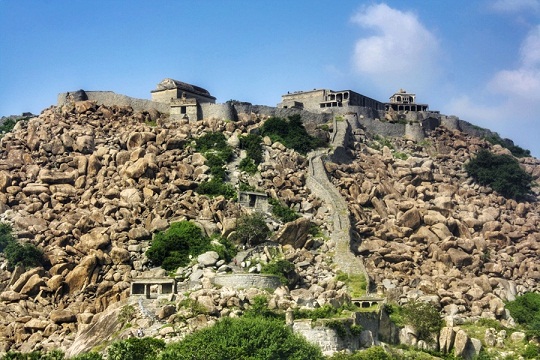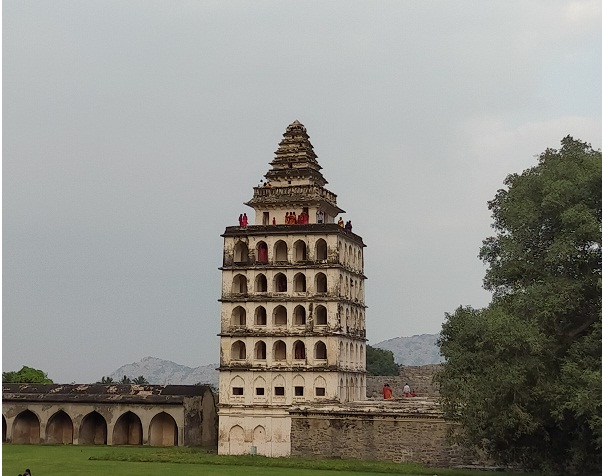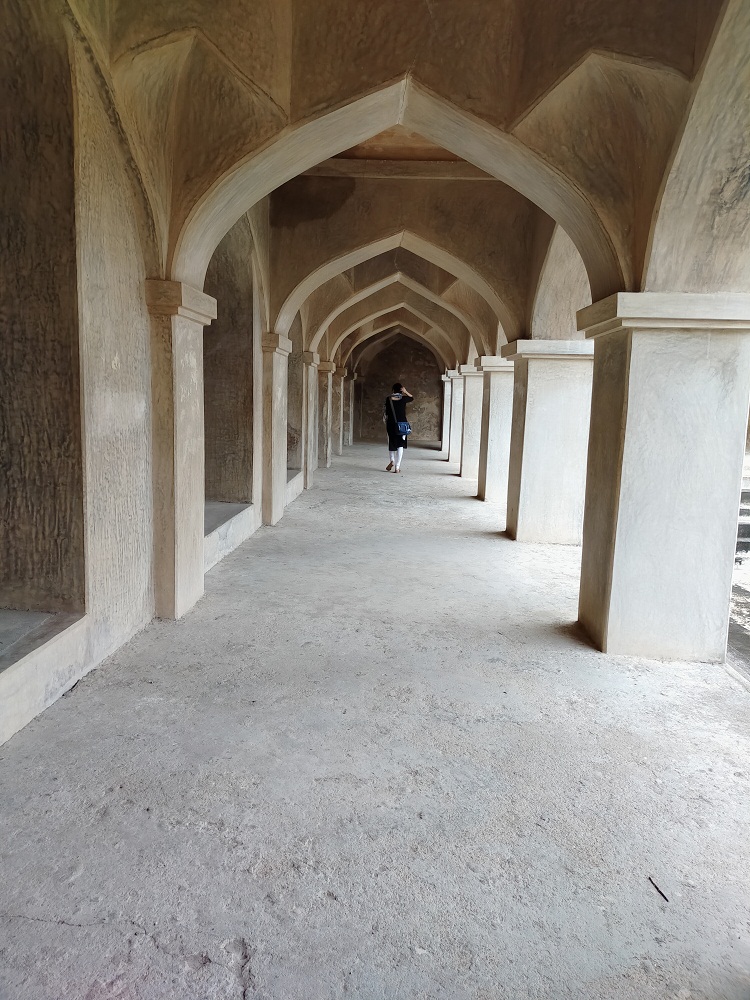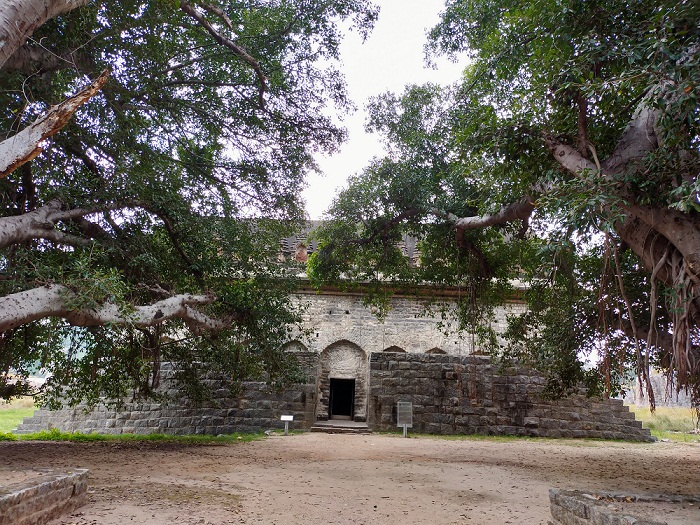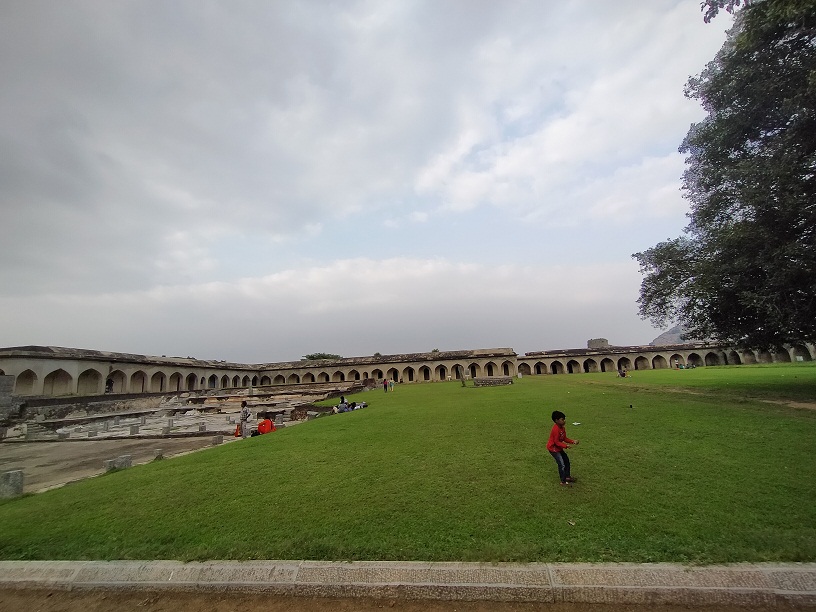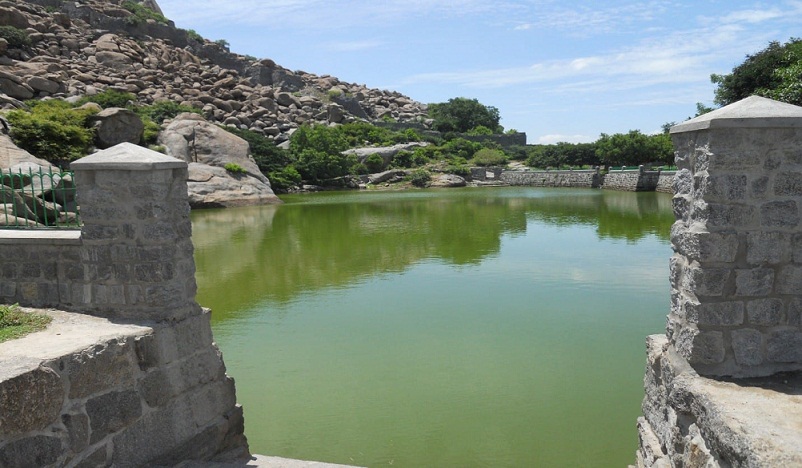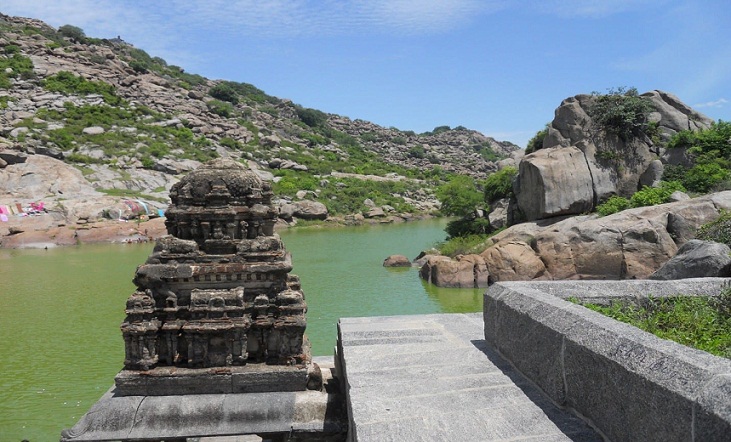Maratha ruler Chhatrapati Shivaji called it the “The most impregnable fortress in India” and the British referred to it as “Troy of the East”, after a mighty city fort described in the Greek mythology. Welcome to Gingee fort in Villupuram district of Tamilnadu about 157 kms from the state capital Chennai.
Ironically the fort which has such a glorious past is relatively unknown to the tourists as well as researchers and is less traveled. Anyone traveling to Thiruvannamalai, a popular destination from Chennai or Pondicherry must pass by Gingee and wouldn’t miss catching a glimpse of the main fort citadel which stands tall right by the side of NH-77. But only a few bother to stop and explore the 1000+ years old fort. I did stop and the experience turned out to be one awesome.
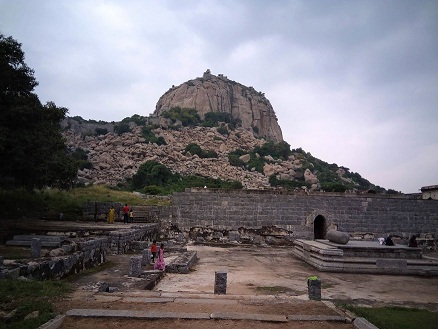
History has it that the fort came into existence in the 9th century AD during the reign of Cholas who had made some minor fortifications. Later Ananda Kon of the Konar dynasty made some modifications that were further strengthened by Krishna Kon in the 12th century AD. But it was the Gingee Nayaks, the lieutenants of the Vijayanagara empire who built the fort in the 16th and 17th century AD.
Also read Visiting the land of Ramana Maharshi and Arunachaleswar
These nayaks later became independent kings and ruled Gingee for several years. The fort was built and located strategically to fend off any invading forces. Great Maratha ruler Shivaji who took control over the fort in 1677 AD added several features to make it virtually unbreachable. In the following 100 years, the fort changed many hands. The Marathas who had lost it to the Sultan of Bijapur regained control over the fort in 1691. Moughal generals during Aurangzeb’s campaign of Deccan laid siege over the fort but had to wait seven years before taking control of the fort in 1698.
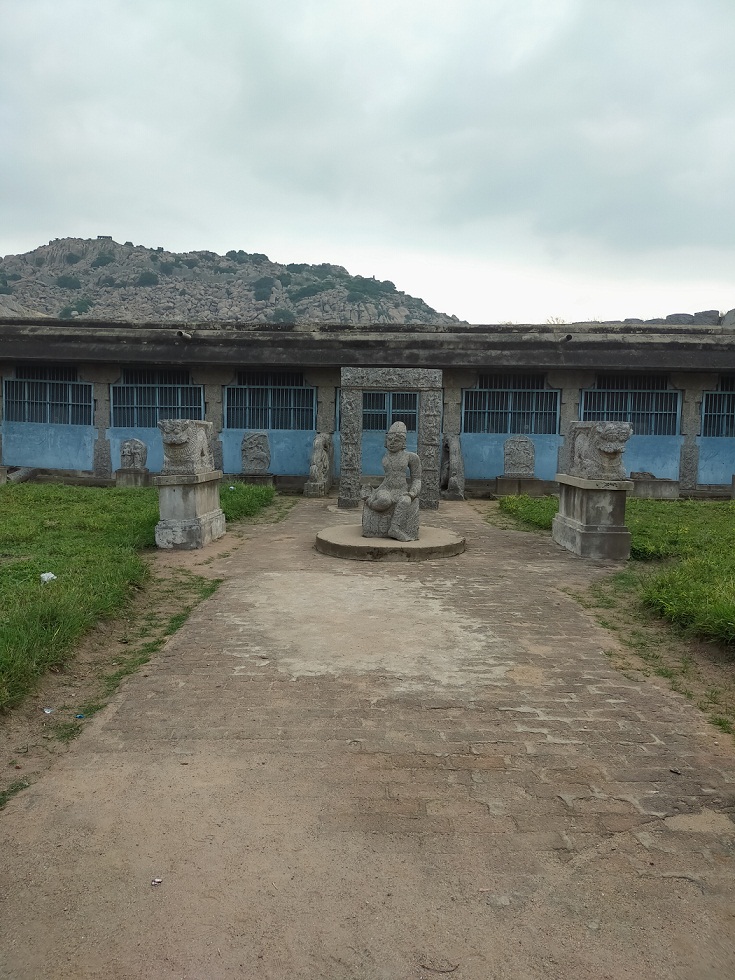
Later the fort was passed on to the carnatic nawabs who lost it to French in 1750. The British took control over the fort in 1761 after which it faded into oblivion. The fort was accorded national monument status in 1921 and handed over to the Archeological Survey of India (ASI) for its conservation and development.
I don’t want to venture into the more detailed history of the fort because I wish to focus on some points that might be more interesting to the readers and help them in planning a visit to the fort. The fort has several features that make it different from other forts in India.
Let me take you on a detour of the fort.
Post Contents
The triangular configuration of the fort
A unique feature of this fort is that unlike other forts, the Gingee fort complex is not confined to just one citadel, but it is spread across three hills and each having a citadel of its own. Rajagiri (the king’s fort) in the west, Krishnagiri (the queen’s fort) in the North, and Chandrayandurg in the South-East are arranged in such a way that they together form a triangle.
The three hills are connected by a 13 kms long wall enclosing an area of 11 square kilometers. The fort is built at an elevation of 800 feet and protected by an 80 feet wide moat. The fortification of the three hills in such an orientation is of great strategic importance and only of its kind in India.
Also read Everything you need to know about Ranipur Jharial temples
The Rajagiri and Krishnagiri forts have semi-circular bastions which acted as the key locations from where the armed defenders could position themselves to counter any attack. Further, there are backup artillery bastions near the outer walls for the purpose of mounting heavy cannons. All these structures were built during the reign of Vijayanagara empire.
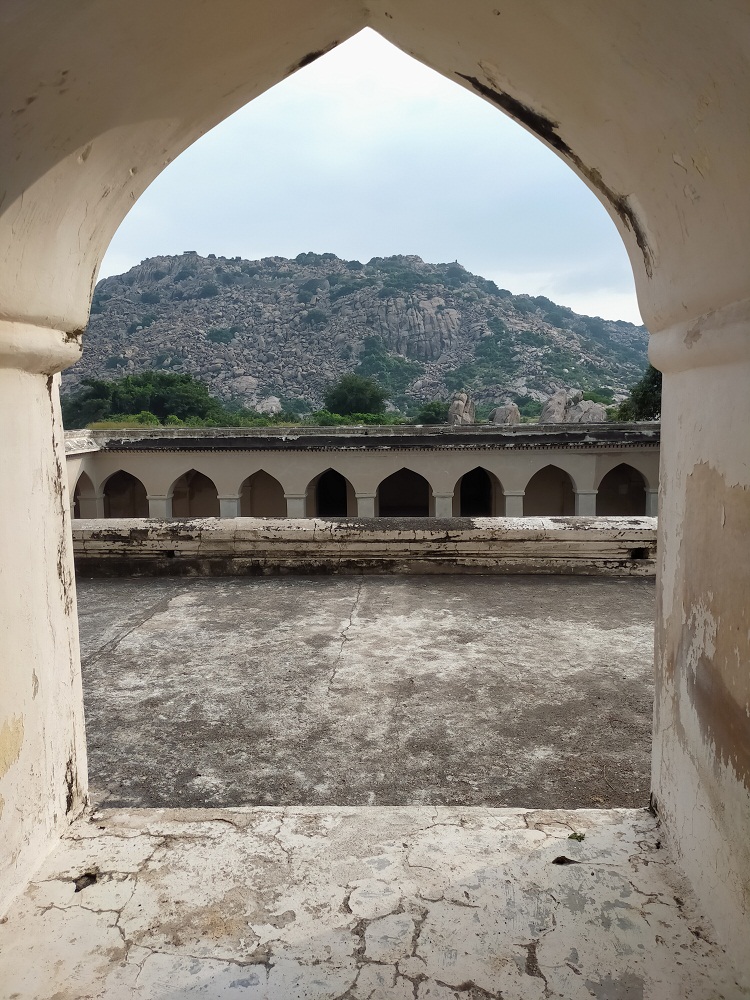
Etymology of the fort’s name
The fort is known by several names not only like the similar-sounding Senji, Chengy, Jinji, and Gingee but even Islamic names like Nusratgarh and Badshahabad. The reason for such frequent changes in the name is attributed to the fact that the fort always remained a target by the external forces and it changed hands several times over a period of 500 years.
It may be noted here that the early Madras records in English spelled the name of the place as Chingee and Chengey. The Tamils even today however call it Senji or Senchi. After a stint of about 300 years by local powers the fort rose to a mighty structure during the rule of the nayaks of Vijayanagara empire in the 16th and 17th century AD.
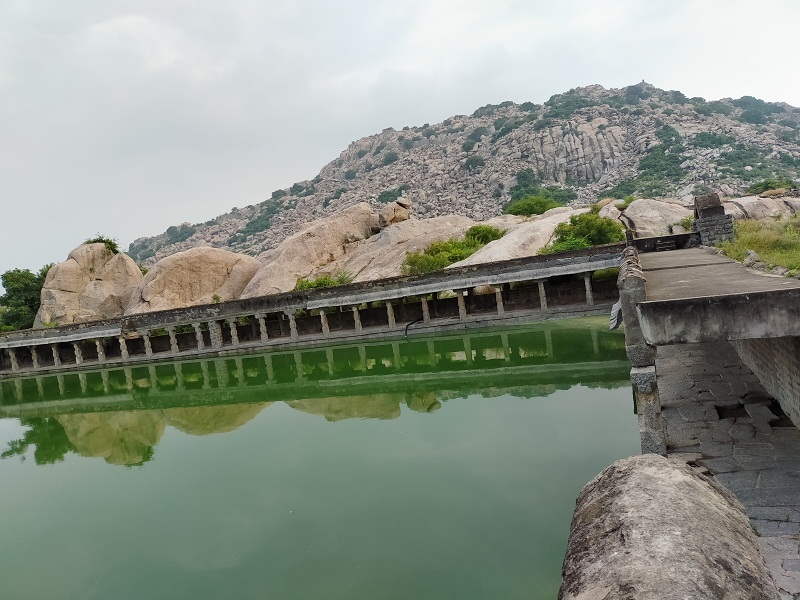
A visual delight
The fort was then known as Senji, the original Tamil name. In 1649 the sultan of Bijapur took control over the fort and ruled Sejni till 1677. During this period the fort was known as Badshahabad named after Adil Shah of Bijapur. In 1677 the great Maratha ruler Shivaji assumed power and renamed it Senji. The Marathas retained power in 1691 before losing to the forces of Aurangzeb after seven years of fierce battle in1698.
The Mughals named Senji Nusratgarh and it was known as such till French took over the fort from the Mughal nawab in 1750. The British captured the fort in 1761. The present name Gingee, sometimes spelled as Jinji came to be known during the French and British periods.
The three hills fort complex of Gingee is a queer blend of religion, art, and strength which is a sheer delight and a visual treat for the visitors. Most of the monuments which are now in ruins speak volumes for the glorious past that the fort witnessed over several hundred years. These monuments which were built by different rulers and dynasties during different times now adorn the fort complex especially the Rajagiri and Krishnagiri.
Kalyana Mahal, the seven-storeyed building structure with a pyramidal top at the base of the Rajagiri is an iconic monument that is a feast for your eyes. There are several other structures in the complex like the granary, gymnasium. elephant tank, magazine hall, barracks, and stables. Several temples dot the fort complex and almost all follow the Vijayanagara architectural style.
To name a few there are the Venkataramana temple, Senjiamman temple, Ranganathaswami temple, Pattabhi Ramaswami templei, and the Venugopalaswami temple. Just as you walk into the interior fort complex you come across the Sadatullah mosque which acts as an entry gate for the complex.
The mosque contributed by the then Nawab of Arcot has an exquisite Moghul architectural design with some inscriptions in Persian. Then there is the Pondicherry gate which seems to have been influenced by the French.
Once you have reached the citadel of the fort at the top of Rajagiri, the sight before you is unforgettable. The extravagant vistas with the landscape and the base monuments from the top are a treat for your eyes. You will simply love it.
Water as a defense mechanism
This fort is different from others in many ways. Apart from being strategically built to fend off any attack, the rulers strengthened the fort by contributing different defense mechanisms at different times. One such improvisation was made by the Vijayanagara empire rulers when they dug a moat just at the entry at the base of the fort complex.
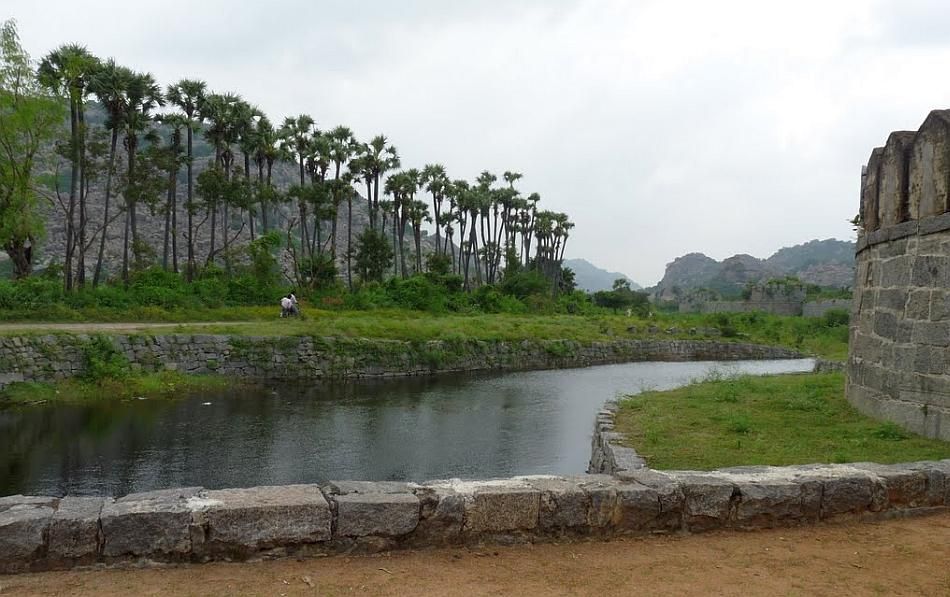
In simple language moat is a deep, broad ditch, usually filled with water, that is dug and surrounds a castle, fortification, building or town, historically to provide it with a preliminary line of defense. The moat at Gingee fort was about 80 feet broad.
However, while entering the fort you are almost certain to miss it if you don’t have a pair of searching eyes. Things have changed so much that you are sure to mistake it for a nullah.
Underground water supply system
It is interesting to note that the Vijayanagara nayakas who ruled Gingee as early as during the 16th and 17th century AD used the technology of gravity flow and siphoning methods to supply water from a large reservoir Chakrakulam in the outer fort to different locations in the inner fort. Water was conveyed through underground earthenware pipes to various places in the fort including Kalyana Mahal which is sme 500 meters away from the reservoir. Remnants of the earthenware pipes are still seen in some parts of inner fort ruins.
The Carnatic Nawabs however adopted a more modern method for water supply in the later years. The water supply system had five water reservoirs at various locations along the supply route, and earthenware pipes. A large water body, the Chettikulam, was the source of supply.
The pipes were positioned at different elevations, opening into the tower’s inner wall for discharge. Water accumulated in the 1st tower would then flow by gravity into the discharge pipes to supply the reservoirs and fountains in the outer fort area. Epigraphic evidence attributes their construction in 1723 CE to Nawab Sadatullah Khan.
Dos and don’ts
- You have to climb 2000 steps to reach the top of the Rajagiri fort. The trek is not easy as it is steep and it could be quite challenging. So, if you are physically fit you can go for it. Older and physically challenging persons should stay away.
- You should plan your visit to the fort in the morning hour so as to avoid the blazing sun in the afternoon. Trekking can be arduous in the afternoon even when you are visiting the fort during the cooler months between November and February. Drop any plan to visit the place in summer.
- Do come with a good amount of snacks and a lot of water. There are no food joints near the fort and the town is a good 3 kms away. The place is quite hot all through the year and since it is an outdoor exercise, you will need water and food.
- Do come with your own vehicle as you won’t find any conveyance for your return from the fort. If you come to Gingee by bus and take a taxi or auto-rickshaw to the fort, then ask him to wait instead of letting him go.
- Don’t come to the fort in the late afternoon. Trekking is not allowed after 3 PM. Even you won’t be able to properly explore the base fort which is huge and scattered over a large area.

